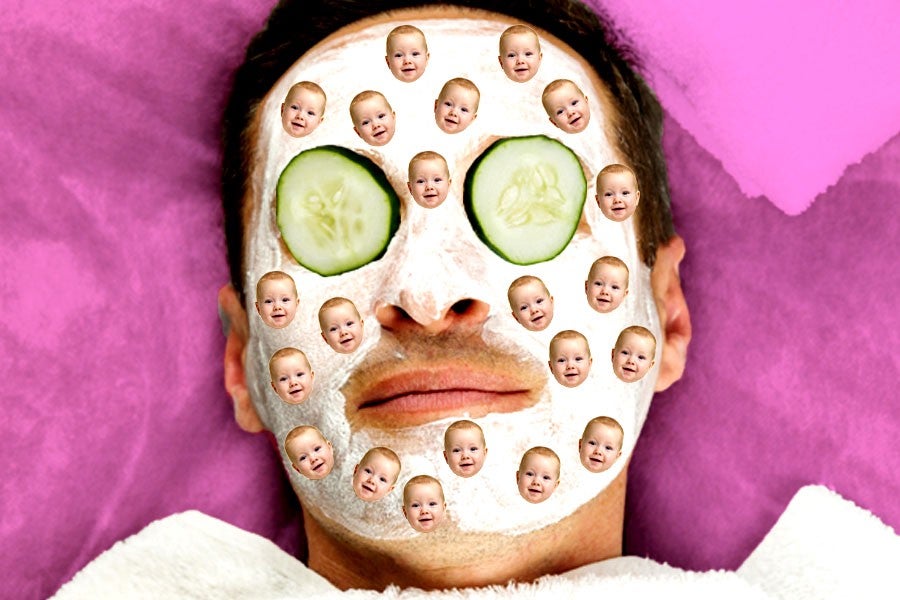I’m lying down on a hospital bed, staring up at a circular light fixture hanging above me. My arms and legs aren’t strapped to the bed, but I keep thinking that maybe they should be, since I feel like I’m involved in a genetic mutation experiment from Resident Evil. And frankly, I sort of am, because I’m waiting to receive a skin facial that’s been genetically infused with baby foreskin.
If I had to trace back to where this whole thing began, I suppose I could blame Sandra Bullock and Cate Blanchett for why I’m waiting to get, for all intents and purposes, dick slapped. Last month, Refinery29 reported that Blanchett revealed to Vogue Australia that she and Bullock were foreskin facial enthusiasts during the filming of Ocean’s 8. “[We] saw this facialist in New York, Georgia Louise, and she gives what we call the penis facial,” Blanchett admitted. “It’s something — I don’t know what it is, or whether it’s just cause it smells a bit like sperm — there’s some enzyme in it so Sandy refers to it as the penis facial.”
Gail Naughton, an expert in regenerative medicine, tells me that the regenerative properties of the foreskin cells is the reason why they were originally used for cosmetic and therapeutic products. As newborn cells, they secrete large amounts of growth factors that are key to healing and regeneration. Recently, however, scientists have been using embryonic stem cells and multipotent stem cells from bone marrow and fat (that are drawn from human fat cells), which are much more powerful in their ability to stimulate growth and rejuvenate the skin.

“Twenty years ago, scientists knew about growth factors in cells in the body but very little about stem cells,” Naughton explains. “Now we have the tools to understand what stem cells can do. We’re better educated, which is why nowadays regenerative medicine fields rely on stem cells from other parts of the body.”
Stem cells, for the uninitiated, are the cells that induce embryonic development. “They’re cells that prevent scarring. If you do surgery on a fetus, they’ll still be born without scars, because their cells will regenerate. This never happens again after you’re born,” says Naughton. This is why these cells are used for cosmetic purposes and specifically to regenerate the skin. “They stimulate other tissue cells to grow very rapidly, and even generate new tissues,” Naughton adds. She believes that using them as part of a facial can help lessen the impact of wrinkles caused by aging and sun damage. Odessa, the registered nurse who’s been assigned to conduct my facial, agrees, but admits that 70 percent of the quality of your skin is genetic — that said, the other 30 percent is in your control.
According to the same article in Refinery29, Louise refers to the penis facial in less phallic terms: The EGF (or epidermal growth factor) facial. “The growth factor used in this case is foreskin — harvested and extracted from the stem cells of a Korean newborn’s circumcised foreskin,” reports Refinery29.
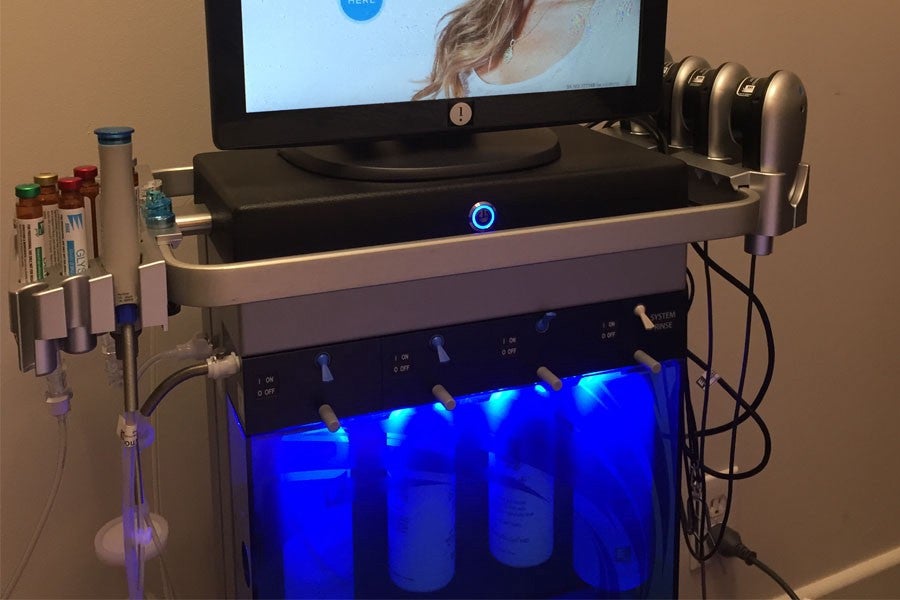
When I ask Odessa about the Korean newborn whose foreskin may or may not be massaged into my face, she tells me that the serum used as part of the Hydrafacial (a type of facial that uses technology to cleanse, extract and hydrate the skin) has been harvested from stem cells that aren’t, in all probability, from a baby’s foreskin. Unless I received products from a very old HydraFacial, says Naughton, the chances of there being actual foreskin in the serum is very slim, since we now have better ways to rejuvenate the skin than relying on baby snippings.
“Our company provides the growth factor to HydraFacial,” says Naughton. “In 2008, we purchased a cell bank that included foreskins derived from routine circumcisions. But the growth factor that’s used in Hydrafacial now comes from induced multipotent stem cells that are derived in our labs. They come from bone marrow, from fat or from different parts of the skin that are much more effective in their regenerative qualities.”
In other words, my facial isn’t the direct dick-to-face sort of foreskin facial. It’s kosher.
According to Boston Magazine, though, it takes just one foreskin (Korean or not) to grow these cells for decades. This was something I was unaware of when I called DMH Aesthetics, a clinic in L.A. that provides the “newest aesthetic treatments on the market in a warm and inviting atmosphere,” per its website. This adequately describes the sterile, albeit luxurious, environment of the clinic: Think of a dentist’s office decorated by the same interior designer in charge of crafting a Vegas hotel room — dark wallpaper with gold flowers etched into it, mirrors everywhere, crisp air-conditioned temperatures and something that smells really, really good.

Confession: When I made my appointment, the woman I spoke to asked if I wanted to add what I kept hearing was the “gross factor.” Of course I did: That was the whole reason I was calling. But I couldn’t help wonder why they chose to brand the foreskin facial as the “gross factor.” Only later would I find out that I had misheard her, and that she was actually saying “growth factor,” which refers to the additional serum that ostensibly includes a baby’s foreskin.
When I walk into the clinic, the woman at the front desk, Jackie, isn’t surprised to see me, even though I’m a man. She tells me that when they first opened, eight years ago, their male clientele was small, but in the last two years, it’s grown so much that it makes up nearly 40 percent of their business. Odessa tell me that even though she thinks men are getting more educated on skin care in general, the recent surge in male clientele is in part due to the machinery they use. “Men don’t feel like they’re walking into a nail salon,” she explains. “We use machines and medical-grade equipment, which feels more legitimate to them, more masculine.”
Jackie is right about more men being interested in skin care, too, at least according to a CNBC report that claims more men are exfoliating than ever before. “Since 2012, beauty and personal care launches specifically targeted at men have increased globally by more than 70 percent, according to Mintel [a market research firm]. In 2014, total U.S. sales for the men’s personal care market hit $4.1 billion, up 6.7 percent from 2012 and 19 percent from 2009, making it one of the fastest-growing segments of the beauty industry. Mintel predicts sales will grow to $4.6 billion by 2019,” the cable channel reports.
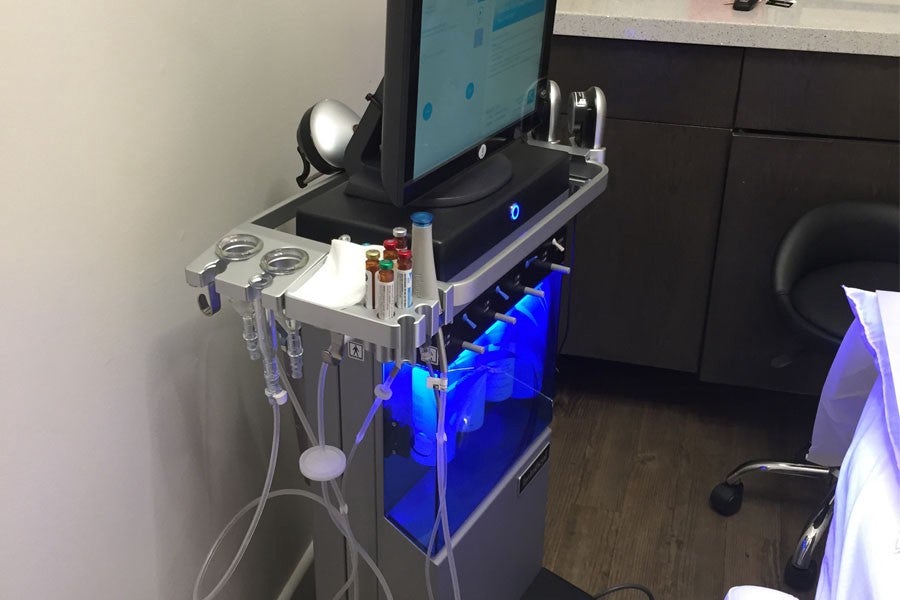
Jackie says that while laser hair removal is still their most popular service amongst men, collagen and elastin services for skin tightening is also popular. “The Hydrafacial is an entry way drug into this because the cost is reasonably low compared to other skin treatments,” she tells me. Of course, reasonably low is also reasonably relative, considering the Hydrafacial (with the addition of the growth factor) costs $255 per treatment.
After a few minutes and a complimentary bottle of Fiji water, I’m escorted into a private room where there’s a giant picture of luscious red lips hanging on the wall, opposite a machine that looks exactly like the one a dental technician would use to clean your teeth. I lay down on the bed per Odessa’s instructions and look up. The light fixture above me glows mightily, and I feel a little nervous.
Odessa explains each step of the treatment, beginning with the use of lactic acid to soften the pores via a deplaning tool (a sort of pen with a flat end). “We use this to wake up your skin,” she explains. The feeling, which she prepares me for, is like sandpaper being dragged across your face. While that sounds awful, it isn’t unpleasant — it just feels like I’m getting a powerful face scrub applied to my face. Next she uses an acid peel solution that leaves my face tingly. I enjoy this, too. Here, though, is where the facial becomes high tech — and why, according to Odessa, men feel less “girly” when they recieve it: Rather than using her hands to conduct extractions (i.e., expunging the filth from my pores), Odessa uses a vortex-extraction nozzle that feels like a mini-vacuum being dragged across my face.
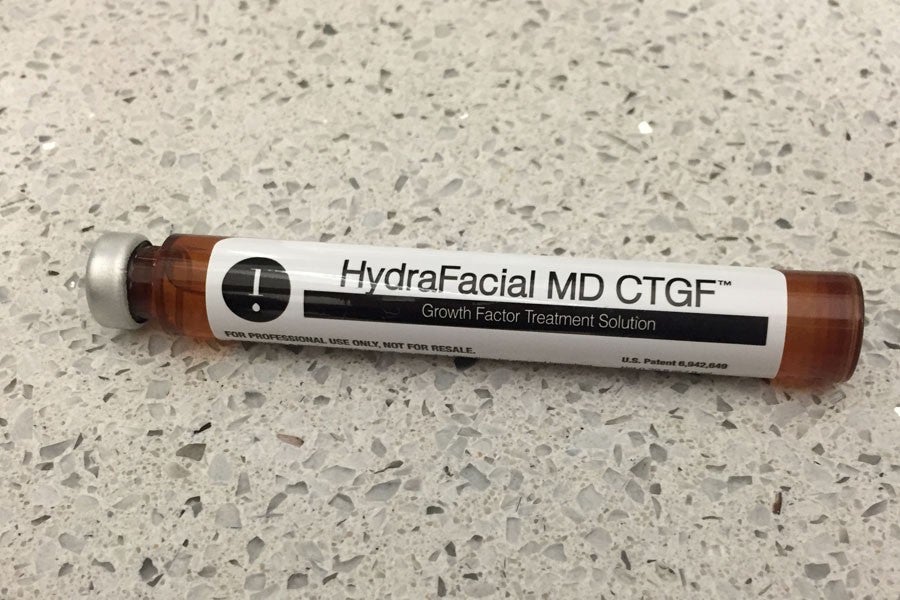
Finally, 20 minutes or so later, Odessa tells me that she’s going to apply the growth factor. Using a variation of the deplaning tool, she reloads the pen with a brown glass tube that has “Growth Factor Treatment Solution,” written across it. Slowly, she drags the pen across my face, under my eyes, over my forehead and under my nose, where I attempt to find out if I can single out the smell of a baby’s foreskin (even though I have no idea what that might smell like).
I can’t. In fact, the only thing I smell during the Hydrafacial is the faintest scent of soap and lotion. After not-quite-baby foreskin has been applied to my face, Odessa rubs in the final serum, which includes antioxidants and collagen (this, she tells me, is for hydration). At this point, I’ve yet to see what my skin looks like, but for the first time in my life, I literally feel like I’m glowing. Before I can share this radiance with the rest of the world, though, Odessa tells me that I have to sit under an LED light for 20 minutes to help my skin absorb the product. She places a pair of tanning goggles on my head, flips the switch and I quickly feel the wattage glazing my face.
An eternity passes and still this light, that I cannot see but can definitely feel, is shining. Odessa, meanwhile, is nowhere to be found. It’s at this point that those initial thoughts of feeling like a human test subject come crawling back into my brain: “Is this light safe? Shouldn’t I be wearing a radiation vest? What exactly are they doing to me?” After pondering the meaning of everything — along with what may be going through a baby’s head when he gets snipped — Odessa comes back into the room, flips a switch again and the light goes out. Like an older, obsolete model, I feel like I’ve just been decommissioned.
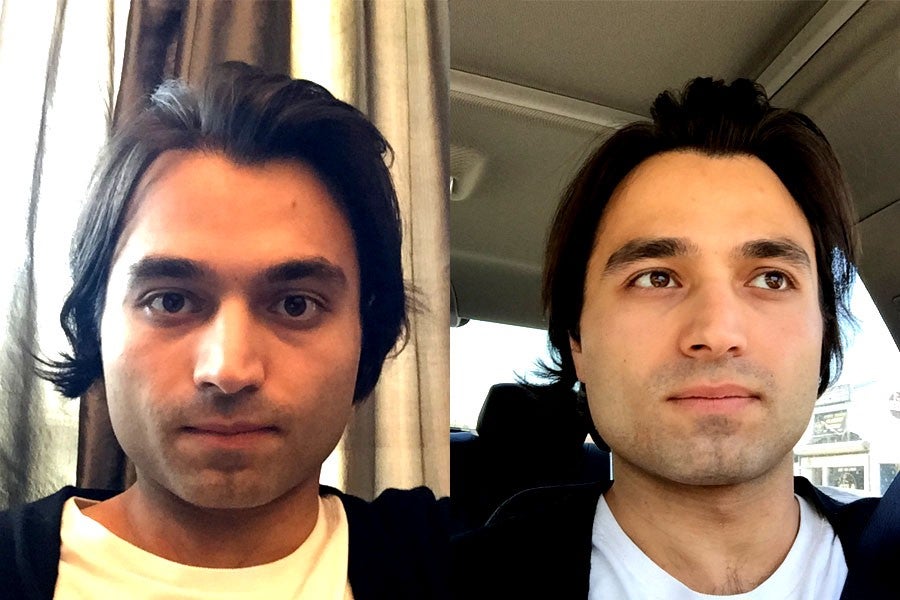
She tells me I’m done, I thank her, and slightly disoriented, I stumble out of the office and back into the world, having still not seen what my face looks like. Worried that my meter may have run out, I sprint toward my car, and it’s there, amid the sun and the trees and the sound of birds chirping, that I catch the first glimpse of my face in the car window.
My first thought: Fuck, they’re good.
Second thought: I’d seriously do this every three to four weeks per Odessa’s suggestion (your skin sheds every 28 days), if only it didn’t cost a quarter of my rent.
As of this writing, I’m two days removed from my Hydrafacial, and my skin feels as soft as a baby’s foreskin. Or rather as soft as I imagine a baby’s foreskin to be. The dark spots under my eyes have all but disappeared and I’m still glowing, perhaps even more brightly. And yet I’m overcome by a wave of melancholy similar to the way I felt during that final summer in high school when I was unemployed and free to fuck off as I may.
I’m only 27, but will my skin ever look and feel this good again?
